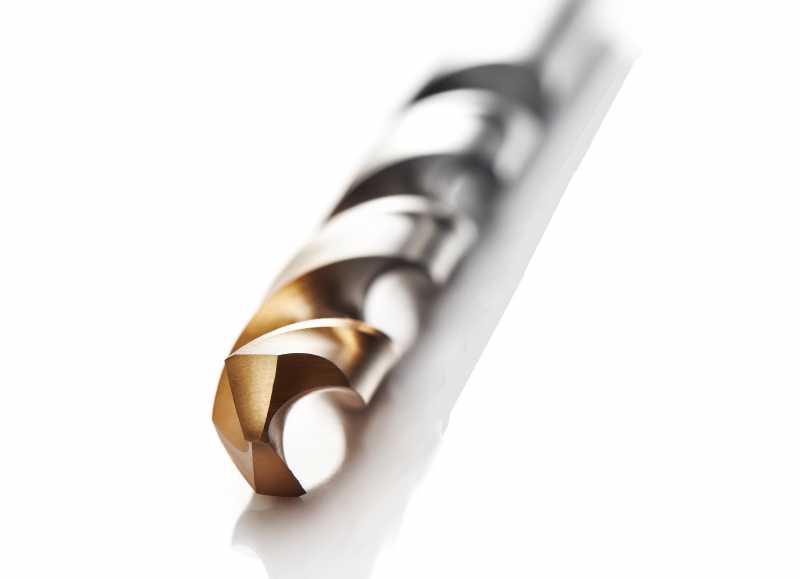
The metalworking industry has experienced both positive and negative periods of economic development in recent years.
This is often linked to the performance of several key industries, such as automotive, aerospace and oil & gas. However, there is one segment which seems to weather the storm regardless of the economic climate – Maintenance, Repair and Overhaul (MRO).
Regardless of whether times are good or bad, many industrial companies have continual requirements for maintenance and to support production operations. Their primary aim is to find alternative options to keep costs low by reusing existing equipment or materials, repairing items or simply choosing a cheaper option to get the job done.
A key feature of MRO is hand-drilling operations, particularly standard high-speed steel (HSS) drills, which represent the lifeblood of the segment. Dormer Pramet is a leading manufacturer of HSS and HSS-E general purpose drills, with more than 100 years’ experience of providing cutting tools to meet companies’ MRO needs.
The most popular ranges within its Dormer assortment, include jobber length and stub length drills for use in hand-held power drills, pillar drills and other manually operated machinery. Its stub length drills, for example, feature shorter flutes to increase toughness and precision. This makes them ideal for tight spaces and hand-held operations that require rigidity. In addition, the shorter length reduces deflection, breakage and runout.
However, when performing hand-held applications, the length of the drill is not the only important criteria to consider when choosing the right cutting tool. Consistent and predictable performance is critical, meaning the right geometry and torque capabilities are paramount.
Torque
The drilling torque is predominantly determined by the workpiece material properties, diameter, drill geometry and machining parameters. From the machining parameters, the feed is the main factor to consider, because cutting speed has little influence on the development and size of the cutting forces.
With modern CNC machine-tools the drilling torque is rarely a limiting factor, but with light duty machines, pillar drills and hand-held power drills it is a primary consideration.
When torque becomes a limiting factor, a reduction of the feed per revolution is needed or alternatively a change to a two-stage operation. This means pre-drilling with a smaller sized drill (≈ 0.2xD), followed by drilling with the desired diameter.
Point Geometry
In general CNC machining environments, maximizing drilling speed, while maintaining required hole-quality, is often favored as it can result in greater cost savings. However, for the MRO engineer, safety and reliability is paramount. It is therefore important to understand the connection between the features of the drill-point geometry and the allowable penetration rate.
The rake angle, for example, is measured at the peripheral corner and approximately equal to the lead of helix. However, it changes along the length of the major cutting edge, getting smaller to eventually become negative near the drill axis. This improves the sharpness of the drill, which in turn, reduces the amount of torque required.
Just like the rake angle, the clearance angle also changes in the radial direction. But where the rake angle decreases from the peripheral corner to the drill axis, the clearance angle increases. This helps to create a smooth exit hole during hand-held operations.
Also, the chisel edge is the first point of contact, pushing into the material. However, it doesn’t cut the work-material, but instead displaces it while penetrating. As a result, the chisel edge creates most of the thrust forces exerted. The geometry of the chisel edge, together with the point angle, determines the centring characteristics which control hole positioning, size and straightness.
Versatile cutting tools
A cutting tool which features these characteristics is the popular Dormer A100 HSS drill. Suitable for drilling a variety of materials, such as steels, aluminium and stainless steel, the versatile A100 is ideal for hand-held applications. Its strong 118-degree standard point is easy to re-grind and a steam oxide finish prevents the work-piece material from sticking to the cutting edge.
Also, the legendary Dormer A002 general purpose jobber length drill, developed more than 20 years ago, continues to be sold in huge quantities around the world. Providing a smooth cutting action and consistently high quality, in a wide variety of materials, its self-centering split point offers excellent positional accuracy.
Its lesser known cousin, the A108, features a split point and a quick-spiral helix specifically for machining stainless steel. A sharp geometry limits the onset of work-hardening and a steam tempered surface treatment helps retain cutting fluids and prevents material sticking to the cutting edge. Manufactured from M2 grade of HSS, which is one of the toughest available, make it ideal for hand-held operations.
The Dormer A777 and A117 high speed cobalt jobber and stub drills provide another option for hand drilling. Their heavy-duty design makes them suitable for machining high-tensile, tougher materials, such as tool steels.
A 135-degree split point design helps with self-centering when used by hand and reduces the push force required. A bronze oxide finish prevents work-piece material from sticking to the cutting-edge during usage.
Hand-held tools
In addition to standard jobber drills, Dormer Pramet has a range of cutting tools for other hand-held applications. Spot weld drills are one of the most common used in MRO applications, especially when replacing sheet-metal panels welded together. Removing a spot weld with a standard twist drill can be messy and dangerous because the drill can wander on the hardened, uneven surface.
However, the A723 high-speed cobalt spot weld drill is available in several standard sizes to suit common applications in the automotive and trailer repair industry. A special lip and spur point provide accurate centering by preventing the drill from wandering. In addition, a sharp outer-corner cuts the softer material around the spot weld at the same time.
A strong web design gives strength for improved penetration in tough conditions and ensures a safe and reliable use. Short flute options enhance rigidity for the hand-held drilling of thin panels and sheet steel, increasing stability even more.
Finally, high speed steel (HSS) sheet metal drills are available in several standard sizes to suit common rivets, screws and bolts. Suitable for drilling thin sheet steel and panels, the A123 range features a 120°-point geometry with a short flute to provide easy penetration and rigidity in portable applications. No body clearance further increases stability during drilling and breakthrough to give superior hole quality.
Its thin web at the point provides excellent self-centering properties, while its steam tempered surface improves performance and reduces the chance of built-up edge. An economical double-ended version (A119) is also available, helping to reduce inventory costs.
Dormer Pramet’s wide collection of economical hole-making tools is supported with additional options, such as threading taps and rotary carbide burrs. This demonstrates the company’s commitment to the MRO segment, helping to ensure it continues to develop no matter what the market conditions.






